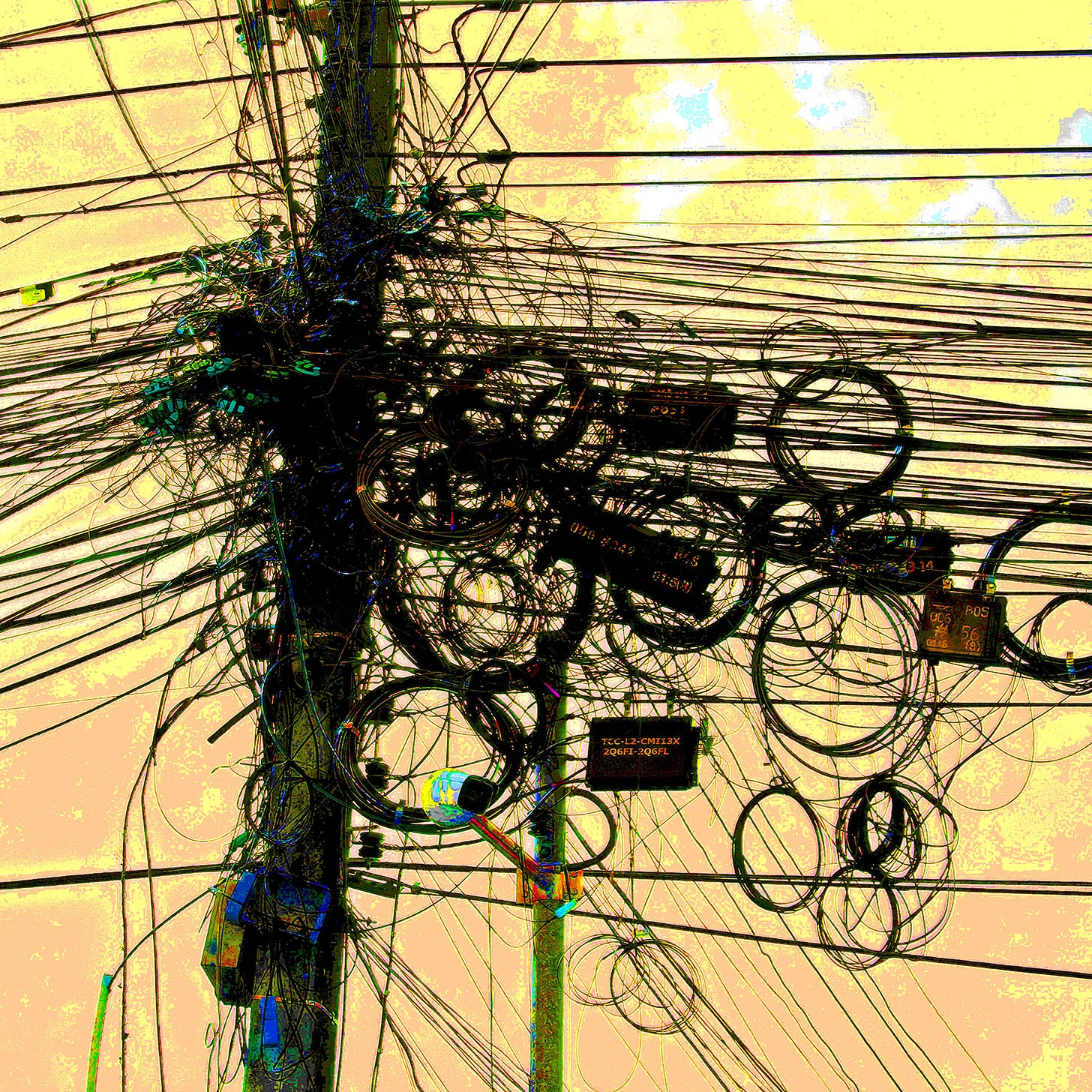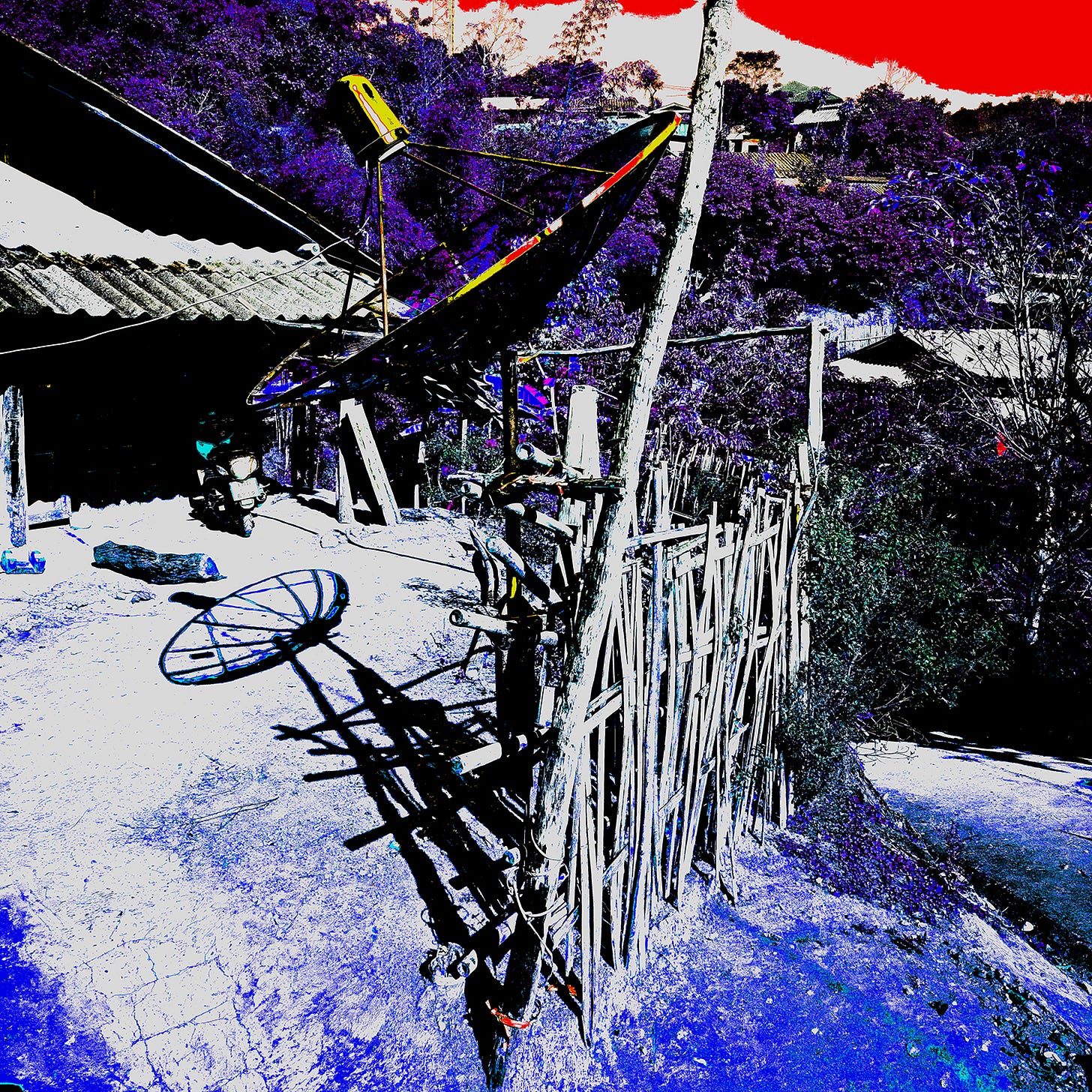XVII. Transitions in the digital age
Part 17 of an international solo on ”Lanna“ by Lim Siang Jin. This online exhibition, comprising 20 parts, is from May 6 to June 5, 2025
EVEN IN the more remote places, modern communication is quietly reshaping daily life. Wi-Fi and mobile networks now connect villages once considered isolated, opening doors to new opportunities. Technology isn’t replacing heritage; it’s helping sustain it. Artisans can now sell handmade crafts online, and communities share traditions through social media. The overhead wires may look messy, but beneath them is a network of people adapting in their own way. Here, progress isn’t about abandoning the past—it’s about blending the old with the new.
Tangled wires, untangled adaptation
TO MANY outsiders, the tangled overhead cables crisscrossing streets seem messy, even backward—just like when Bill Gates pointed out Thailand’s cable chaos in 2016. But standing there, I saw something different. These wires aren’t just clutter; they’re proof of rapid adaptation. As towns grew, people prioritised connection over perfection, making sure homes, businesses, and schools stayed online. It’s not always pretty, but it works. These cables represent resilience, not failure—a community finding its own way to modernise. The challenge now is upgrading without losing that resourcefulness, proving that progress doesn’t have to mean starting from way down.

Connected, but on their terms
IN THE COUNTRYSIDE, life is more connected than ever—not only through satellite dishes, but also through widespread mobile data. Rural areas aren’t left behind; they’ve just found their own way forward. I saw children playing online games, family members video-calling loved ones, and individuals watching movies—all thanks to mobile networks reaching remote villages. Internet access isn’t just about convenience; it’s a tool for opportunity. Here, “remote” doesn’t mean isolated—just connected in a way that fits their world.

Other side of connectivity
LANNA is more connected than ever, but I couldn’t help wondering—are things moving too fast? Will technology outpace the community’s ability to adapt? It’s not just about access; it’s about balance. Algorithms can create echo chambers, shaping what people see and believe. Screens can pull focus away from real conversations, turning social media into a substitute for deeper connections. And then there’s the risk of overexposure—endless gaming, extreme content, distractions that pull people in too deep. Connectivity is powerful, but like anything, it comes with trade-offs. The challenge isn’t just getting online—it’s using technology without losing ourselves.
For more information, click on links: Stephen Menon, O Art Space Gallery, Lim Siang Jin and his art, here and here. For a detailed acknowledgment, click here




